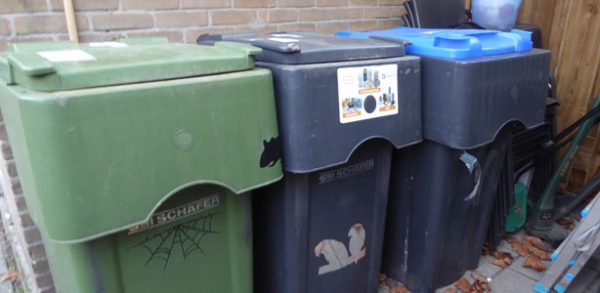In the Netherlands people tend to try and recycle items before putting them to landfill. This can either be using the recycle scheme in place in your municipality, or taking them to a second hand store (known as a ‘Kringloop’ in dutch).
If you have clothing, household items, furniture etc that still has some life left in them, then look online to find a nearby kringloop. If you have a lot of items, or some bulky items that you want to donate, they will often come and collect them for you, just give them a call.
For items that can not be re-used there are a number of options for recycling through your local municipality, for example:
- Small normal household waste
- Garden, fruit and vegetable waste
- Paper and cardboard
- Clothing
- Glass
- Plastics (what sort depends on the municipality)
- Small chemical waste (such as batteries, paint etc)
- Frying fats and oils
- White goods
- Building waste
These items need to be collected separately to your normal household waste.

Normal household waste is either collected via a large grey wheely bin, or via an underground container, depending on where you live. If you have an underground container, your household should have been issued an access card to place your garbage in the container. For grey wheely bins, these are often collected on a bi-weekly or monthly basis and collection schedules can be found on municipality websites.
If your house has a garden you will usually receive a green wheely bin for garden and food waste. Again, you can find collection schedules on your local municipality website.
Containers for glass, small chemical waste, clothing, paper/cardboard and frying fats are usually located near (or in) most supermarkets. If you live outside the city you may also have a wheely bin for paper/cardboard and even twice a year clothing bags. You can see if your municipality provides such services via their website.
Larger items, such as white goods and building waste, can be taken to your local rubbish collection depot (known as ‘Afvalbrengstation’ in dutch). Depending on the municipality they may require an access pass (often the same as used for underground containers) to access the depot, otherwise a form of ID is acceptable. Some depots also charge a fee depending on what sort and how much waste you are dropping off. Refer to the websites under Milieudienst or Reinigingsdienst.
Collection of the waste is paid for by a tax (afvalstoffenheffing), assessed yearly based on a flat fee or on weight/amount of the waste. The amount of the tax also varies per municipality and number of people living at a property. Again, in general, one can expect to pay the following monthly rates, based on the Dutch normal usage for 1 person:
- Waste tax: ~150-250 euros per year
 +31 (0)50 367 71 97
+31 (0)50 367 71 97  info@connect-int.org
info@connect-int.org